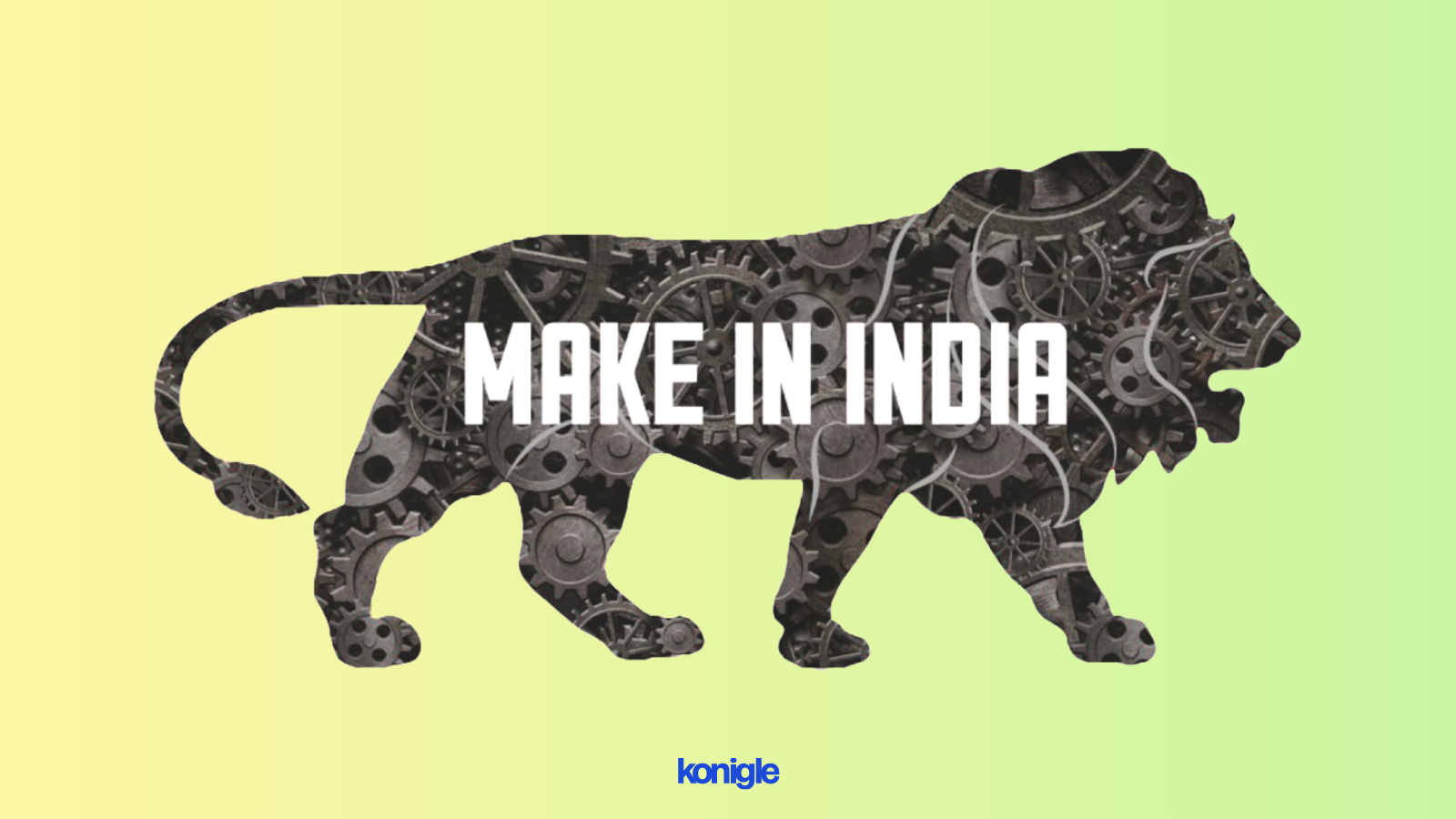Make in India

Aug. 7 2023
Make in India is a transformative initiative launched in 2014 to turn India into a global manufacturing hub, creating jobs & boosting economic growth. It covers 25 sectors & aims to simplify business operations, promote ingenuity & cultivate entrepreneurs
I'm excited to share with you about the Make in India initiative that was launched back in September 2014. This program had the vision to transform India into a global manufacturing hub and increase economic growth by encouraging investments, both locally and internationally, in various sectors.
In this blog post, we'll be exploring the origins of the Make in India initiative, its objectives, and accomplishments, as well as analyzing its pros and cons. Finally, we'll be sharing some insights with manufacturers on the advantages that this initiative offers.
Origins of Make in India:
The concept of turning India into a manufacturing powerhouse originated from Prime Minister Narendra Modi's Independence Day speech in 2014, which marked the official launch of the Make in India initiative. The objective was to encourage manufacturing, draw in foreign direct investment (FDI), and generate numerous job opportunities for India's growing youth population.
Make in India Initiative:
The Make in India initiative was launched with a comprehensive approach to simplify business operations, promote ingenuity, and cultivate entrepreneurship.
The Make in India initiative covers 25 sectors of the economy, including:
- Automobiles
- Automobile components
- Electronics
- Information technology
- Aerospace
- Defense
- Railways
- Power
- Chemicals
- Textiles
- Food processing
- Tourism
By eliminating bureaucratic obstacles, improving infrastructure, and streamlining regulations, the Indian government aimed to position India as a preferred manufacturing hub worldwide.
Make in India Logo:
The Make in India initiative introduced a distinct logo that captures the essence of the program. The logo features a lion, embodying strength, courage, and dynamism, alluding to the potential of the Indian economy.
You can download the logo from the official Make in India website, enabling businesses and individuals to proudly associate themselves with this transformative initiative.
[Download Make in India Logo Here: Download Link]
Who can use the MII logo?
The logo, designed to represent the organization's values and mission, is readily available for use by various government, semi-government, and private authorities. Upon approval, these entities may use the logo on their websites, social media pages, and promotional materials to communicate their affiliation with the organization and its vision.
Who is not required to obtain permission to use the MII logo?
- Any office, officer, or establishment of DPIIT.
- Central Government Ministries/Departments, State Government departments/ministries, and UT Administrations in programs organized by them.
- Indian Embassies/Missions can promote MII by organizing events, creating brochures, producing publicity materials, and placing advertisements.
Who can use the MII logo, but only with permission?
- Central Government Ministries/Departments/PSUs, State Government Departments/Ministries, UR Administrations, in programs conducted in association with organizations such as CII, FICCI, ASSOCHAM, PHDCCI, etc.
- Events that receive financial assistance from the Department for Promotion of Industry and Internal Trade (DPIIT).
- This applies to events organized by private entities that promote the "Make in India" initiative within a specific timeframe.
[Download Format for Applying for Permission to Use the Make in India Logo: Download Link]
Use of the MII Logo for Events, Publications, Websites/Portals
For events that receive financial support from DPIIT or are organized by private entities for a specific period, it is important to give emphasis to:
- Nature and Importance of the Event
- Profile/Track record of the organizers.
- Profile of Participants and Delegates
- The exhibition space and distribution of DPIIT's publicity material will be included in the delegates' kits, among other things.
MII may only be used in publications and on websites/portals related to approved industries. Each case will be considered on its own merit.
Requests for individual use of MII will be considered if they help promote the MII cause. All cases will be considered based on merit.
Pros of Make in India:
- The FDI Boost initiative achieved its goal of attracting foreign investment and boosting India's global competitiveness.
- Job Creation: The initiative led to a surge in job opportunities across various sectors by boosting manufacturing.
- Infrastructure Development: The program has done a great job in spurring the growth of infrastructure. This has led to improved connectivity and logistics, which is really awesome!
- Skill Development: Make in India has been instrumental in encouraging skill development, creating a skilled workforce that is in line with modern manufacturing needs.
- Diversification: This initiative aims to diversify the economy by increasing the manufacturing sector's contribution to GDP.
Cons of Make in India:
- Implementation Challenges: The initiative encountered obstacles in executing policies and developing infrastructure.
- Global Competition: India faced intense competition from well-established manufacturing hubs such as China and Southeast Asia.
- Environmental Concerns: Rapid industrialization has raised environmental concerns, including pollution and depletion of natural resources.
- Labor Rights: Some critics have raised concerns regarding labor rights and working conditions in specific industries.
Advantages for Manufacturers:
- Access to a Large Market: Manufacturers can benefit from India's vast consumer base, which offers significant market potential.
- Skilled Workforce: This initiative's focus on skill development ensures the availability of a pool of capable workers for various industries.
- Reduced Bureaucracy: Streamlined regulations and ease of doing business enhance operational efficiency.
- Global Competitiveness: Manufacturers can take advantage of India's competitive strengths to access international markets.
- Investment Incentives: The Indian government provides incentives to encourage investment and innovation.
Make in India ad
Conclusion
Undoubtedly, Make in India has redefined India's manufacturing landscape by attracting investments, creating jobs, and bolstering economic growth. Despite encountering some challenges along the way, the initiative has had an overall positive impact, positioning India as a formidable contender in the global manufacturing arena.
As the program continues to evolve, it holds the promise of further propelling India's economic growth and establishing the country as a manufacturing powerhouse.